
Fashion has always been a reflection of the times, mirroring society’s values, cultural shifts, and individual expressions. Vintage fashion, in particular, holds a unique place in the fashion world, as it encapsulates the styles and sensibilities of bygone eras. These timeless looks continue to influence modern fashion and resonate with those who appreciate the elegance, glamour, and nostalgia of the past.
In this article, we embark on a captivating journey through vintage fashion clothing styles, exploring the fashion trends of different decades and highlighting their enduring appeal.
The Roaring Twenties: Flapper Fringe and Jazz Age Glamour
The 1920s, often referred to as the Roaring Twenties, was a period marked by newfound freedoms and cultural shifts. This era was defined by jazz music, speakeasies, and a rebellion against traditional values. In the world of fashion, the iconic flapper style emerged as a symbol of this liberated spirit.
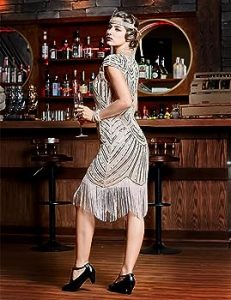
Flapper Dresses:
The flapper dress, with its dropped waistline, loose fit, and intricate fringe detailing, became a symbol of the era. It allowed women to move freely, challenging the constraints of corsets and hoop skirts. Paired with long strands of pearls, cloche hats, and T-strap heels, flapper dresses embodied the vivaciousness of the Jazz Age.
The Golden Age of Hollywood: 1930s and 1940s Glamour
The 1930s and 1940s are often referred to as the Golden Age of Hollywood, characterized by the rise of cinema and the glamour of movie stars. Fashion during this period reflected the elegance and sophistication of Hollywood’s leading ladies.
Bias Cut Gowns:
Bias-cut dresses, made from fabric cut on the diagonal grain, clung sensuously to the body and accentuated curves. This style, epitomized by stars like Jean Harlow and Rita Hayworth, was both sultry and glamorous. Luxurious fabrics like silk and satin were favored for these gowns, which featured draping and delicate detailing.
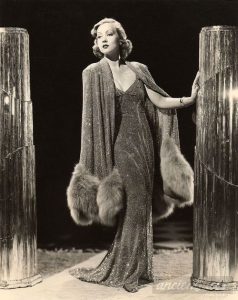
Utility Fashion in the 1940s:
The 1940s brought World War II, and fashion adapted to the wartime restrictions. Utility fashion became the norm, emphasizing practicality and simplicity. A-line skirts, padded shoulders, and knee-length dresses dominated the era. Women embraced a more austere yet elegant style, exemplified by icons like Ingrid Bergman.
Rebellion and Rock ‘n’ Roll: The 1950s and 1960s
The 1950s and 1960s were a time of rebellion and cultural upheaval. Fashion was no exception, with both decades offering distinct styles that continue to influence fashion today.
1950s Dior’s New Look:
Christian Dior’s “New Look” introduced in the late 1940s had a profound impact on 1950s fashion. It featured nipped-in waists, full skirts, and an overall ultra-feminine silhouette. Cinched-in hourglass figures, petticoats, and poodle skirts became iconic symbols of this era.
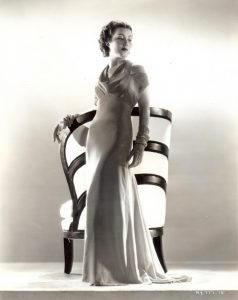
1960s Mod Revolution:
The 1960s witnessed the rise of the mod subculture, with fashion that was all about clean lines, bold geometric patterns, and a youthful, avant-garde spirit. Mini skirts, shift dresses, and go-go boots were the order of the day. Style icons like Twiggy and Jean Shrimpton epitomized the mod look, with their pixie haircuts and bold eye makeup.
The Bohemian Revival: 1970s Hippie Chic
The 1970s brought forth a counter-culture movement that celebrated freedom, self-expression, and nature. Hippie chic, with its relaxed and earthy aesthetic, became a defining style of the era.
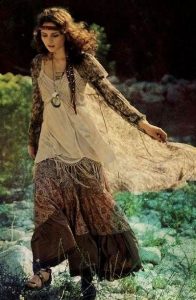
Bohemian Maxi Dresses:
Flowy maxi dresses adorned with floral prints and embroidery became a staple of 1970s fashion. They were often paired with fringed vests, oversized sunglasses, and chunky platform shoes. This style celebrated a carefree and bohemian lifestyle.
80s Excess and 90s Grunge: Contrasting Styles
The 1980s and 1990s presented contrasting fashion sensibilities. The ’80s were characterized by opulence, while the ’90s brought a more rebellious and minimalist approach.
1980s Power Dressing:
The 1980s embraced power dressing with strong shoulders, bold prints, and exaggerated silhouettes. Women wore oversized blazers, statement jewelry, and body-conscious dresses. The era was epitomized by TV shows like “Dynasty” and iconic figures like Madonna.
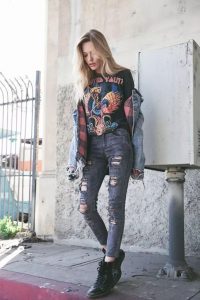
1990s Grunge Fashion: In stark contrast, the 1990s saw the emergence of grunge fashion, characterized by flannel shirts, ripped jeans, combat boots, and a rejection of mainstream glamour. Bands like Nirvana and fashion icons like Kate Moss popularized this anti-establishment style.
Timeless Appeal: Why Vintage Fashion Endures
Vintage fashion continues to captivate fashion enthusiasts for several compelling reasons:
1. Timelessness: Vintage styles are often characterized by their timeless appeal. These looks have transcended generations, proving that true style knows no expiration date.
2. Quality Craftsmanship: Many vintage garments were crafted with exceptional attention to detail and high-quality materials, making them durable and enduring.
3. Sustainability: Embracing vintage fashion is a sustainable choice. By recycling and upcycling vintage pieces, we reduce the demand for new clothing production, which can have a significant environmental impact.
4. Individual Expression: Vintage fashion allows individuals to express their unique style and stand out from the crowd, as these pieces are often one-of-a-kind or rare finds.
5. Nostalgia: Vintage fashion carries with it a sense of nostalgia, connecting us to the past and allowing us to relive the glamour and elegance of bygone eras.
In conclusion, vintage fashion clothing styles have left an indelible mark on the world of fashion. From the flapper dresses of the 1920s to the grunge fashion of the 1990s, each era has contributed unique and enduring styles that continue to influence modern fashion. Whether it’s the timeless elegance of Hollywood’s golden age or the rebellious spirit of the 1960s, vintage fashion reminds us that style is a powerful form of self-expression that transcends time.
So, the next time you step into a vintage clothing store or pull a cherished piece from your own collection, remember that you’re not just wearing a garment – you’re wearing a piece of history, a testament to the creativity and individuality that have shaped the world of fashion over the decades.
